Home » Other Articles » Tuesday Treasures Index » Tuesday Treasures - April 2023 - Tuesday Treasures - April 2023
Tuesday Treasures - April 2023
TUESDAY 25 APRIL
The Glorious Thames
Way back in March 2021 our Blog was titled ‘The Glorious West’ and illustrated from the Great Western Trust Collection the GWR Brochure of 1933 with that title, designed by the then very much in vogue poster artist E McKnight Kauffer.
Today we demonstrate that BRWR were not shy of exploiting the similar adjective ‘glorious’ but did so in this case for the River Thames, though again honouring the GWR creation of this same brochure description they used as early as 1935 an example of which is also in the Trust’s Collection.

The two illustrated brochures are dated 1950 and 1962. They are equally attractive enough to gain the attention of potential passengers but also show how the intervening 12 years have radically changed the design of such publicity, from a commissioned artist’s image in 1950, to that of a commissioned photographic studio image in 1962.
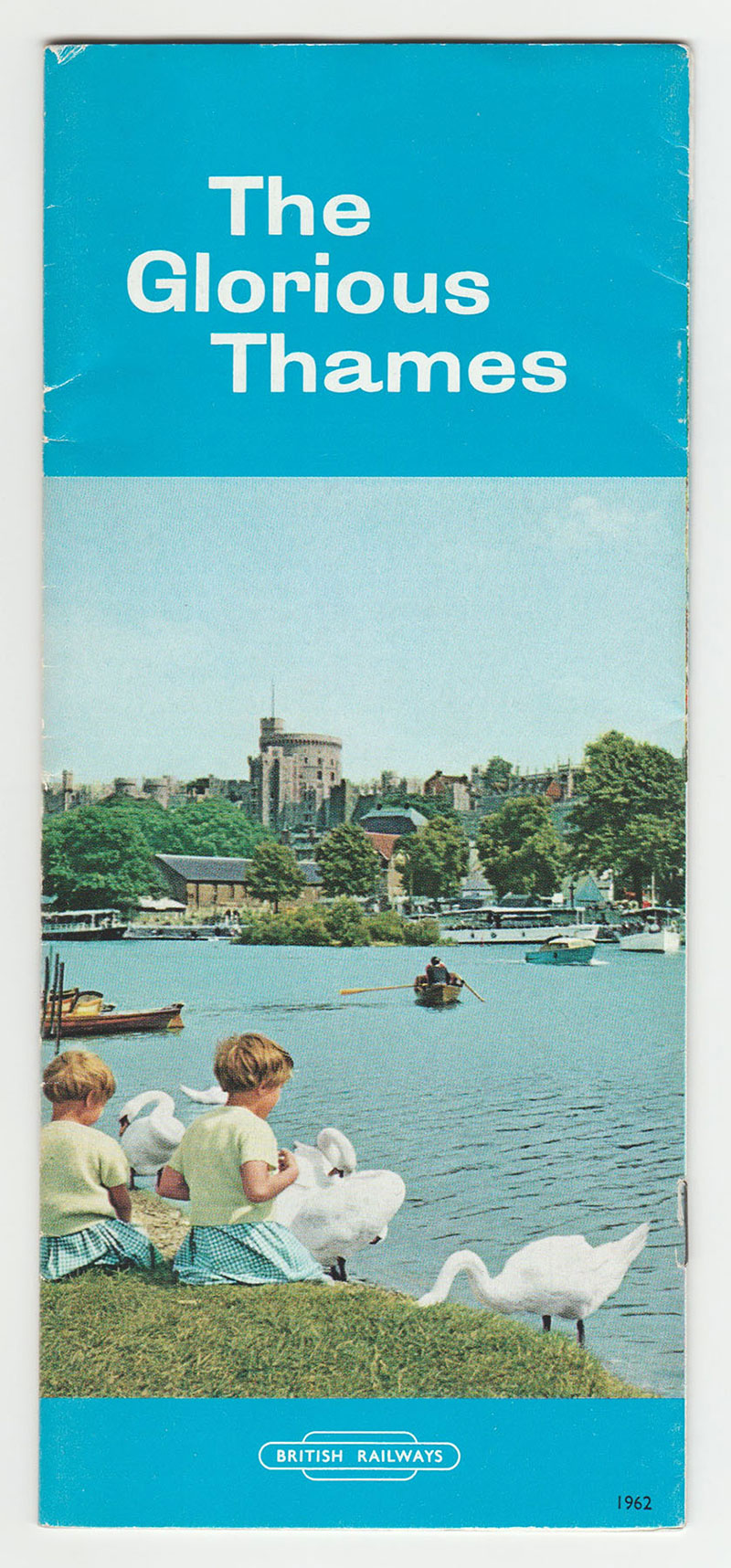
The 1950 image reflects very much the continued tradition established long past by the GWR, of commissioned artist’s works, on this occasion Jack Merriott, even though it must be said that in the post war years, the GWR did use photographic studios albeit monochrome was then in use rather than colour.
What didn’t change was the copious information with both brochures, with useful text describing locations on the Thames and a richly detailed route map to give locational pointers.
The Thames itself was a very happy source of significant pleasure traffic for the GWR and BRWR proven by the massive number of annual handbills produced for such services on that section of the route.
TUESDAY 18 APRIL
Delivering the Goods – Part 3
In our earlier blogs we covered railway services beyond passenger traffic, such as Moving Home and transport of bulk liquids by rail and followed it by a BR initiative to inspire its staff to canvas for more traffic by offering cash rewards.
In both blogs, we had to reflect that today’s railways offer no such services and our third blog will illustrate yet another service the Great Western Railway and indeed all the then extant railway companies once provided which is no more – that of livestock traffic.
From our extensive archive of the detailed operating notices to staff, the Great Western Trust collection draws upon the ‘Private and not for Publication’ notice to the relevant operating staff for 30 June 1905. Many such notices, produced on a weekly basis covered varied special traffics, as the need arose. This notice however is far more focused, being devoted to the running down after its completion of the 1905 Royal Agricultural Show, which had been held on GWR territory at Park Royal, near London.

The Royal Agricultural Show was a prestigious event that had been held each year at varying locations throughout the country since 1839 and brought much traffic to the GWR when held in its territory. For instance, In July 1857 the GWR put on a double-headed excursion train to take Wiltshire farmers, and others, to the Royal Agricultural Show at Salisbury. The train was 29 carriages long and well filled. Not surprisingly, after leaving Westbury it stalled on an incline. Described by a reporter as a ‘laughable mishap’, the drivers allowed the train to run back slowly to Westbury where another engine was attached and the gradient successfully tackled.
In July 1882, the show was held at Reading. Special trains brought livestock and visitors to the show where an excursion platform was built ¼ mile west of Reading station near to cattle pens. The event was visited on Wednesday 12 July 1882 by the Prince of Wales who arrived by Royal train from Paddington. Excursion trains were run from all parts of the GWR system with special excursion fares, and on 13 July 1882 25,000 passengers passed through the GWR station and a further 5,000 through the South Eastern Railway’s station. Tickets were collected at stations away from Reading such as Twyford, Theale and Tilehurst. To avoid congestion, empty stock was stored at stations such as High Wycombe and Slough. The livestock, much of which arrived by train, was an estimated 2,000 horses, 2,000 cattle, more than 1,000 sheep and 300 pigs. Items of agricultural machinery were also carried into the town by rail.
However, the Royal Agricultural Society decided to look for a permanent showground, in order to reduce costs and make additional income from letting the site for other events. Eventually a 102 acres (41 ha) site was leased in West London and given the name Park Royal by the Society for its 1903 show.
Park Royal railway station was opened on 25 May 1903 by the Prince of Wales who travelled on the first special train to the station, the 3.10 pm from Paddington, and “was graciously pleased to name the station ‘Park Royal’”. A commemorative brass plaque to the effect was fixed in the station booking hall. The station, about 4½ miles west of Paddington, was next to the Royal Agricultural Society's new permanent showground. The West Ealing to Greenford branch was opened experimentally for traffic to the Royal Agricultural Show at Park Royal on 3 June 1903 but wasn't opened permanently via the Hanwell curve until 2 May 1904.
After the 1903 show, The Royal Agricultural Society continued to use the site on the two following years. However, attendances were poor and the travelling show resumed from 1906. The Park Royal site was sold for industrial use. It also became the home of Queens Park Rangers football club from 1907 to 1915. The photograph shows supporters arriving at Park Royal station for a match.
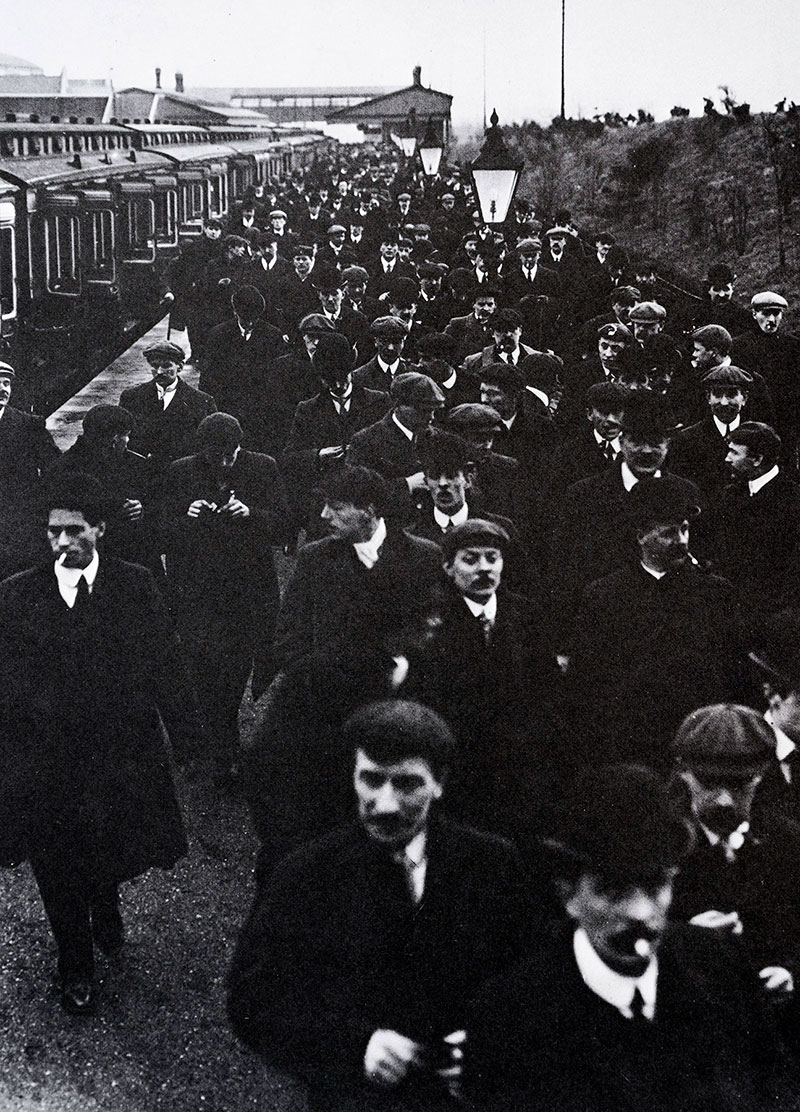
The Royal Agricultural Show's importance was the massive nature of the agricultural produce, livestock, vegetables and farm machinery all brought to it, for inspection and in many ways, purchase, by the great and the good of the then vast community of owners, producers, labourers and officials committed to this crucial aspect of the UK economy.
In those days, such an event had to rely upon rail transport, and the GWR's Park Royal site was perfect for it, given the creation of dedicated sidings etc from its main line tracks. Naturally, as farmers with their livestock and manufacturers of special farm machinery came from all over the UK, the extent of rail special services was substantial. Organisation and coordination was vital, even to the provision of way points for care of livestock on long journeys.
We illustrate just the main title page of our GWR Notice, which of itself, details Train No1 of no less than 48 wagons destined for Windsor, the Midland via Acton and the Great Northern via Victoria. A further 9 pages detail no less than 18 further specially constructed and destined trains. All had nominated named guards, officers etc, and of course timed itineraries. As a precaution should they be needed, ‘spare vehicles’ were secured, extending to 17 Horse boxes, 15 carriage trucks and 6 milk trucks.
All the above was under the scrutiny of the GWR's London Division Superintendent, Mr W A Hart and we can be assured that any mishap great or small would be duly notified and individuals held to account!
We ought to close on a very physically practical note. All those livestock wagons had to be hygienically cleaned, before and after their use. On far too many occasions, rampant diseases hit whole farming districts, hence animal hygiene was essential. Spare a thought for those whose daily employment included such unpleasant but vital physical work!
TUESDAY 11 APRIL
A Day at the Races – No.2
Our Blog readers with sharp memories may recall that in April 2022 we had our first ‘Day at the Races’ Blog based upon a special set of trains for Pickford’s staff to the Grand National in Liverpool, run of course by the GWR!
The Great Western Trust collection has a large selection of publicity on the Horse Racing event services of the GWR and BRWR, and today we thought it appropriate to look back some 57 years to Saturday 16 April 1966 and illustrate the simple handbill for the Beaverbrook Newspapers Day event.
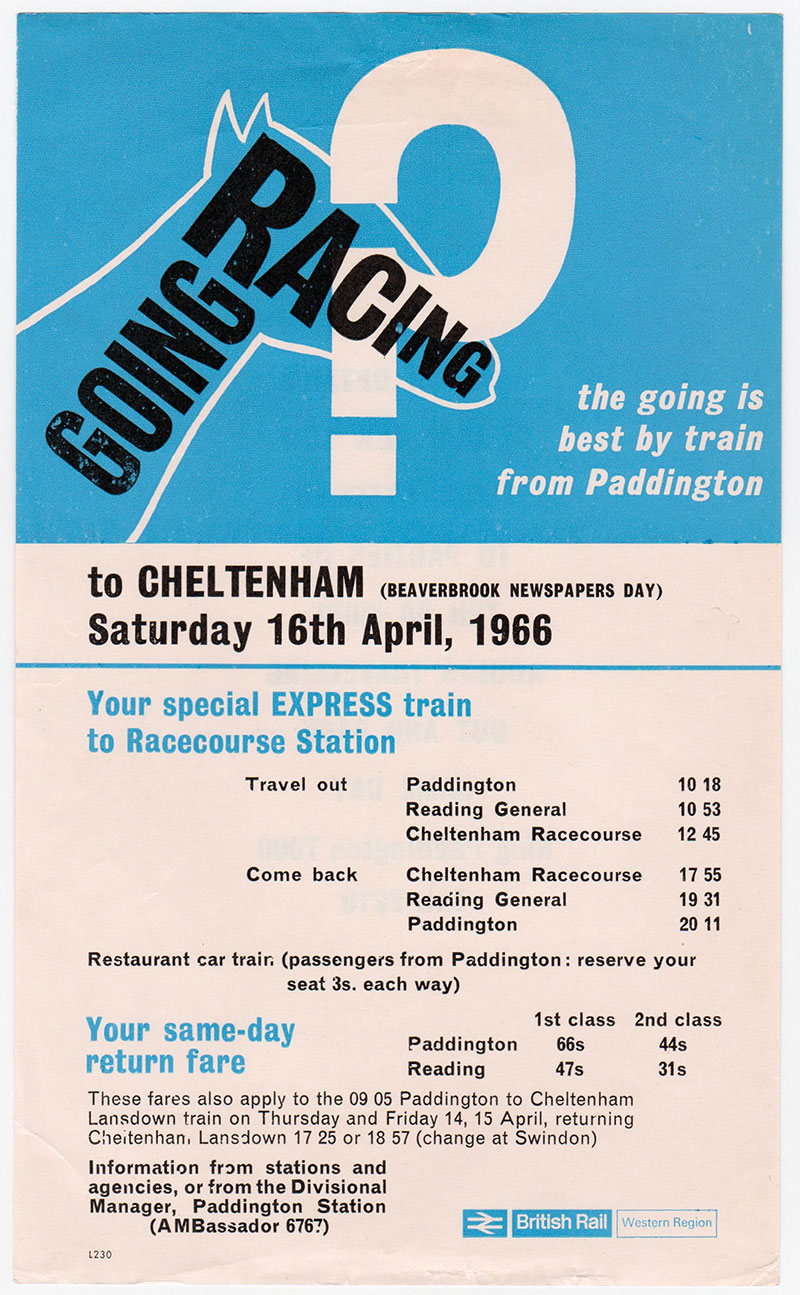
Like all effective publicity its design had to be striking if it was to grab the attention of a prospective passing passenger, and how simple it is, with the outline of a race horse’s head and that large question mark as the winning post!
Such very ephemeral items are full of associated contemporary content that has long since passed into history. In this case, beyond the fact that such a through train journey is no longer a reality, the telephone code for the Divisional Manager as AMB 6767 points to the era in which telephone exchanges began with 3 letter codes, and a helpful memory hint was that it was short for Ambassador!
The reverse side of this small handbill simply informed readers of the reduced fares offered for parties of ten or more, a very appropriate one given that such groups were certainly a popular means of a ‘grand day out at the races’, whether their bets proved productive or the confetti of losing stubs so often found near the Tote Betting cubicles!
We shall return in future to this rich subject of special race day trains and the pre-event horse carrying services the GWR and BRWR were keen to offer.
Beaverbrook Newspapers was owned by Lord Beaverbrook, who had been born Max Aitken in Canada in 1879. He took up residence permanently in England in 1910, and received a peerage in 1917 as Lord Beaverbrook. During the second world war he was appointed Minister of Aircraft Production. This led to one of the Southern Railway’s Battle of Britain class pacifics being named after him. The photograph shows Lord Beaverbrook, third from left, performing the naming ceremony in September 1947.
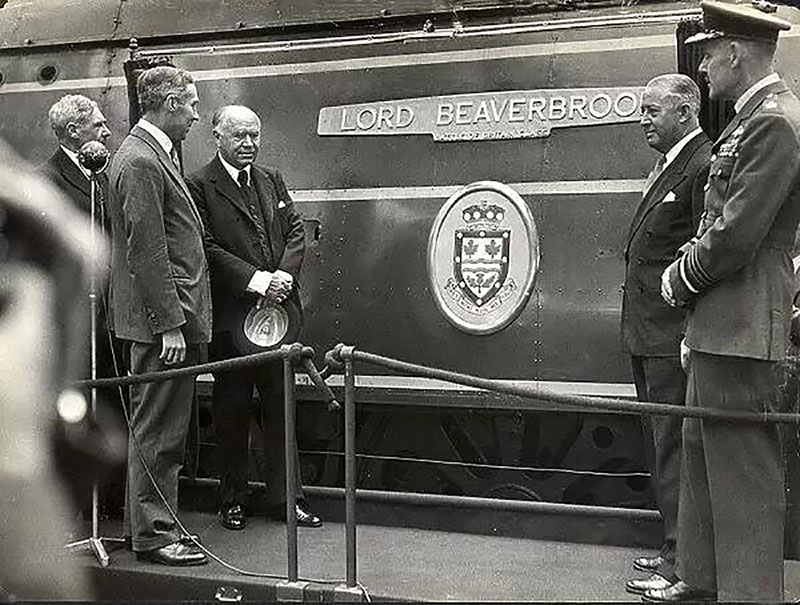
Lord Beaverbrook acquired the Daily Express in 1916 and built it to become the largest circulation newspaper in the world. Beaverbrook Newspapers also published the Sunday Express and the London Evening Standard. Lord Beaverbrook died in 1964.
TUESDAY 4 APRIL
Corporate Image on the Railways
Today's Blog looks back 57 years to April 1966, when the nationalised British Railways published for its staff the booklet illustrated from the Great Western Trust Museum & Archive collection entitled ‘Your New Uniform’.
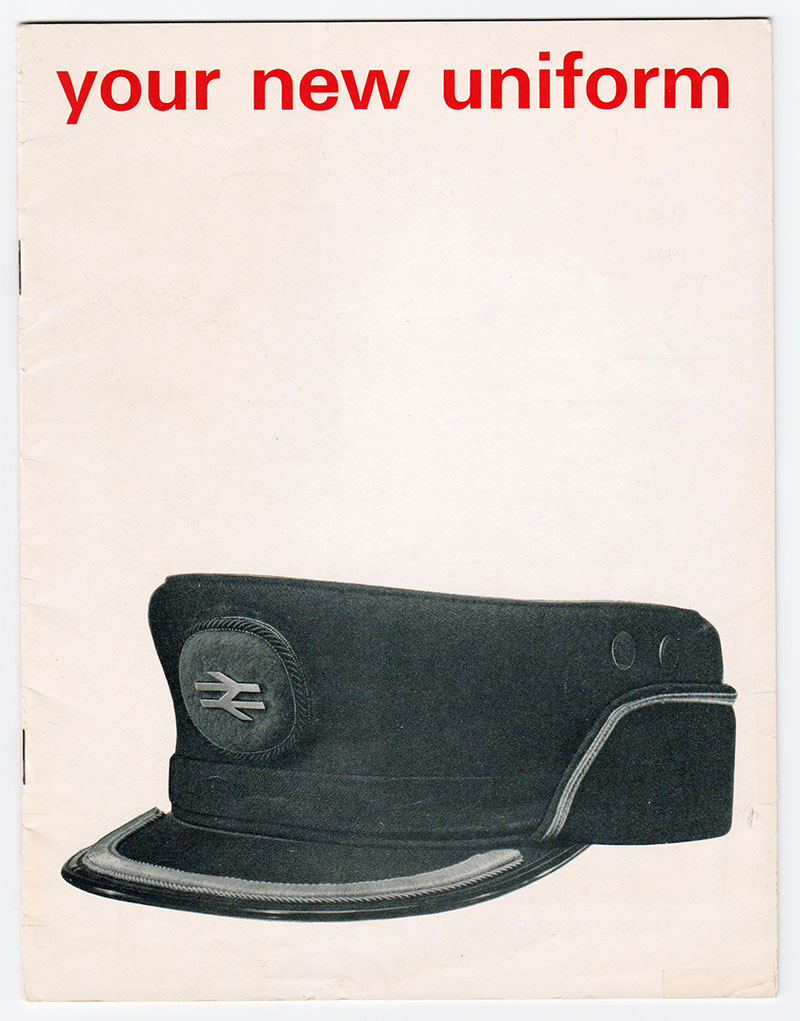
This marked the culmination of a radical and large financial and organisational investment in what today would be termed ‘Corporate Image’. Indeed, the extensive content of this 20 page booklet with photographic illustrations and explanatory text firmly emphasised that a new image was needed and would benefit staff and the organisation, predominantly of course, in its influence on how visually, the operating staff would appear to passengers and its goods traffic customers.
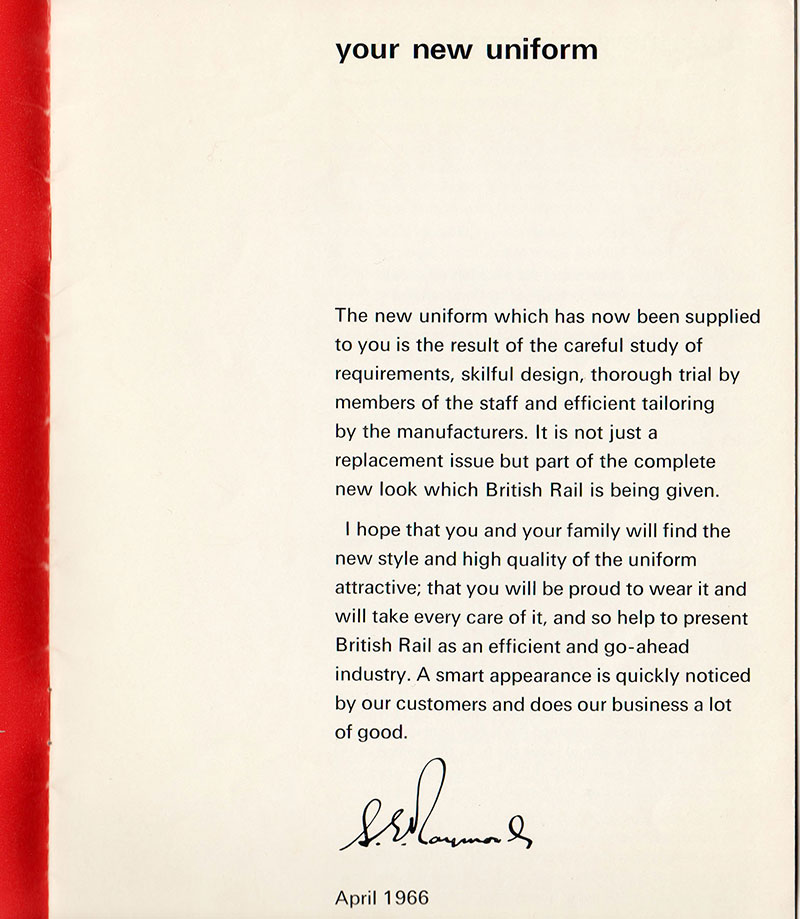
We can do no better to demonstrate this, than by illustrating the introductory page signed by the then Chairman of the British Railways Board, Mr S E Raymond (1965-1967) and knighted in 1967. Interesting also that he mentions that he hopes that both staff and their families will find the new style and high quality attractive! That said, the text further into the booklet makes a rather pointed criticism of the uniforms they are to replace. We quote:-
“An up to date transport service cannot be represented by uniforms dating from a less style conscious age.”
Be that as it may, in our further illustration the booklet proves the very thorough extent to which these new uniforms were designed for comfort and utility in operational use for all staff grades and duties.

What may come as no surprise to those students of GWR history, however, is that a current manufacturer of this kind of heavy-use uniform, baulked at the request to copy the quality of material used for late period GWR uniforms. They found that its shear density of cloth was at least double that of currently manufactured and affordable equivalents!
Fortunately, a great benefit of the GWR's high quality uniforms was that many survived to become a wonderful part of the extensive Great Western Trust uniforms and regalia collection at Didcot Railway Centre.
Didcot Railway Centre Newsletter
Stay up to date with events and what's going on at Didcot Railway Centre.
You may unsubscribe at any time. We do not share your data with 3rd parties.